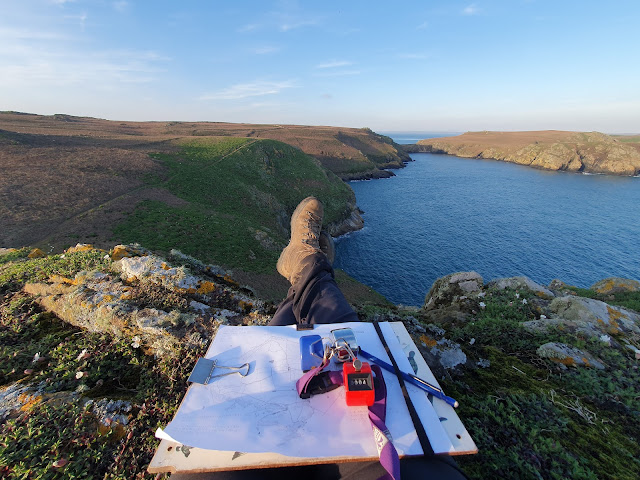The arrival of May has seen our seabirds starting to lay and our researchers are hard at work monitoring their productivity. But the changing season has also brought a flurry of new staff to the island.
And so,
introducing Skomer Island’s WTSWW 2023 staff…
 |
| The 2023 Team, L-R: Hannah (Fieldworker), Lotti (LTV), Erin (LTV), Leighton (Warden), Rob (Visitor Officer), Ceris (Assistant Warden) © Skomer VO |
 |
| Leighton out on the boat © Skomer Warden |
Leighton
– Warden (he/him)
Leighton is
back for his third year as Warden and sixth year in total. As a previous Visitor
Officer on Skomer, he knows the island inside out! He oversees all research,
monitoring and visitor operations on the island.
 |
| Ceris driving the dumper truck © Skomer Warden |
Ceris has returned to the island for her fourth season on Skomer as our Assistant Warden. She is a strong advocate for increasing diversity and inclusion on the island and is in charge of the weekly volunteer work plans, along with a range of monitoring and surveys, maintenance work and welcome talks to guests. She is learning Welsh and enjoys practising this on morning boats!
 |
| Rob out on a breeding bird survey © Skomer AW |
Rob –
Visitor Officer (he/him)
The team are excited to welcome Rob as Visitor Officer for his first season. Taking over from Beth, he has big shoes to fill – but thankfully has big feet. Rob runs our hostel, is responsible for day visitors, runs the social media and carries out a range of monitoring work. As a previous long-term volunteer, he is excited to be back to show off our birds, bats, plants and everything in between in all their glory! When not working, he is learning Welsh, enjoys playing his instruments and gives Leighton a run for his money in island cricket matches...
 |
| Can you spot Hannah surveying? © Lotti B-H |
Hannah – Fieldworker (she/her)
Hannah has
joined us as Fieldworker this year. An experienced seabird researcher, Hannah
has worked on the Isle of May, Malta and the Azores. She monitors Razorbills, Guillemots,
Kittiwakes, Fulmars, Herring Gulls and Greater Black-backed Gulls for breeding
success. When she’s not looking through her scope, she’s a big fan of sea
swimming and can be found birding all over the island.
Lotti
(she/her) and Erin (she/her) – Long-Term Volunteers
 |
| Lotti and Erin, our LTVs from March to July © Skomer VO |
So there we
have it, our team for 2023! If you’re over this summer, please feel free to
stop us and say hello.
Hope to see
you soon.
The Skomer
Island Team


